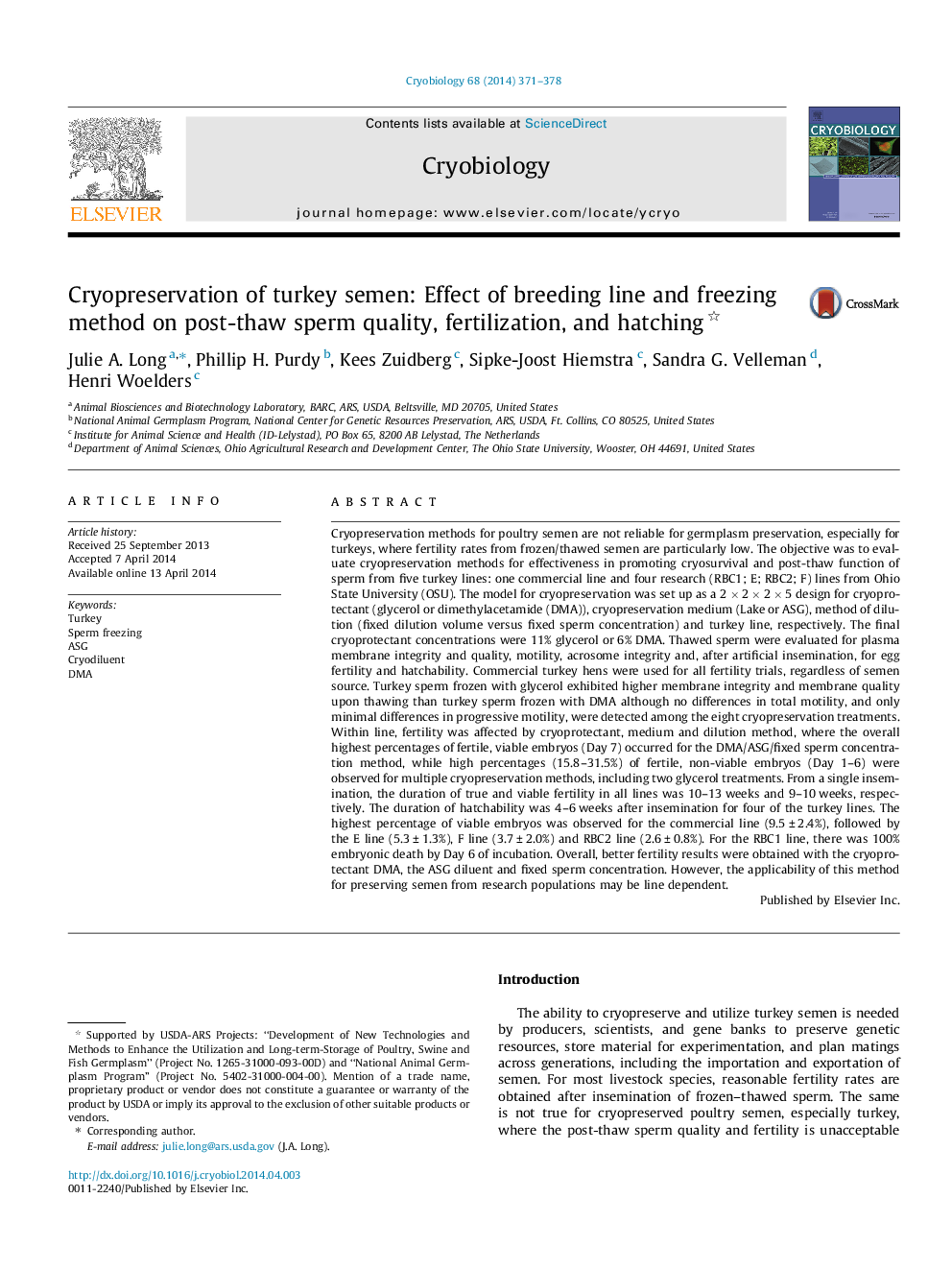| کد مقاله | کد نشریه | سال انتشار | مقاله انگلیسی | نسخه تمام متن |
|---|---|---|---|---|
| 2168428 | 1092893 | 2014 | 8 صفحه PDF | دانلود رایگان |

Cryopreservation methods for poultry semen are not reliable for germplasm preservation, especially for turkeys, where fertility rates from frozen/thawed semen are particularly low. The objective was to evaluate cryopreservation methods for effectiveness in promoting cryosurvival and post-thaw function of sperm from five turkey lines: one commercial line and four research (RBC1; E; RBC2; F) lines from Ohio State University (OSU). The model for cryopreservation was set up as a 2 × 2 × 2 × 5 design for cryoprotectant (glycerol or dimethylacetamide (DMA)), cryopreservation medium (Lake or ASG), method of dilution (fixed dilution volume versus fixed sperm concentration) and turkey line, respectively. The final cryoprotectant concentrations were 11% glycerol or 6% DMA. Thawed sperm were evaluated for plasma membrane integrity and quality, motility, acrosome integrity and, after artificial insemination, for egg fertility and hatchability. Commercial turkey hens were used for all fertility trials, regardless of semen source. Turkey sperm frozen with glycerol exhibited higher membrane integrity and membrane quality upon thawing than turkey sperm frozen with DMA although no differences in total motility, and only minimal differences in progressive motility, were detected among the eight cryopreservation treatments. Within line, fertility was affected by cryoprotectant, medium and dilution method, where the overall highest percentages of fertile, viable embryos (Day 7) occurred for the DMA/ASG/fixed sperm concentration method, while high percentages (15.8–31.5%) of fertile, non-viable embryos (Day 1–6) were observed for multiple cryopreservation methods, including two glycerol treatments. From a single insemination, the duration of true and viable fertility in all lines was 10–13 weeks and 9–10 weeks, respectively. The duration of hatchability was 4–6 weeks after insemination for four of the turkey lines. The highest percentage of viable embryos was observed for the commercial line (9.5 ± 2.4%), followed by the E line (5.3 ± 1.3%), F line (3.7 ± 2.0%) and RBC2 line (2.6 ± 0.8%). For the RBC1 line, there was 100% embryonic death by Day 6 of incubation. Overall, better fertility results were obtained with the cryoprotectant DMA, the ASG diluent and fixed sperm concentration. However, the applicability of this method for preserving semen from research populations may be line dependent.
Journal: Cryobiology - Volume 68, Issue 3, June 2014, Pages 371–378